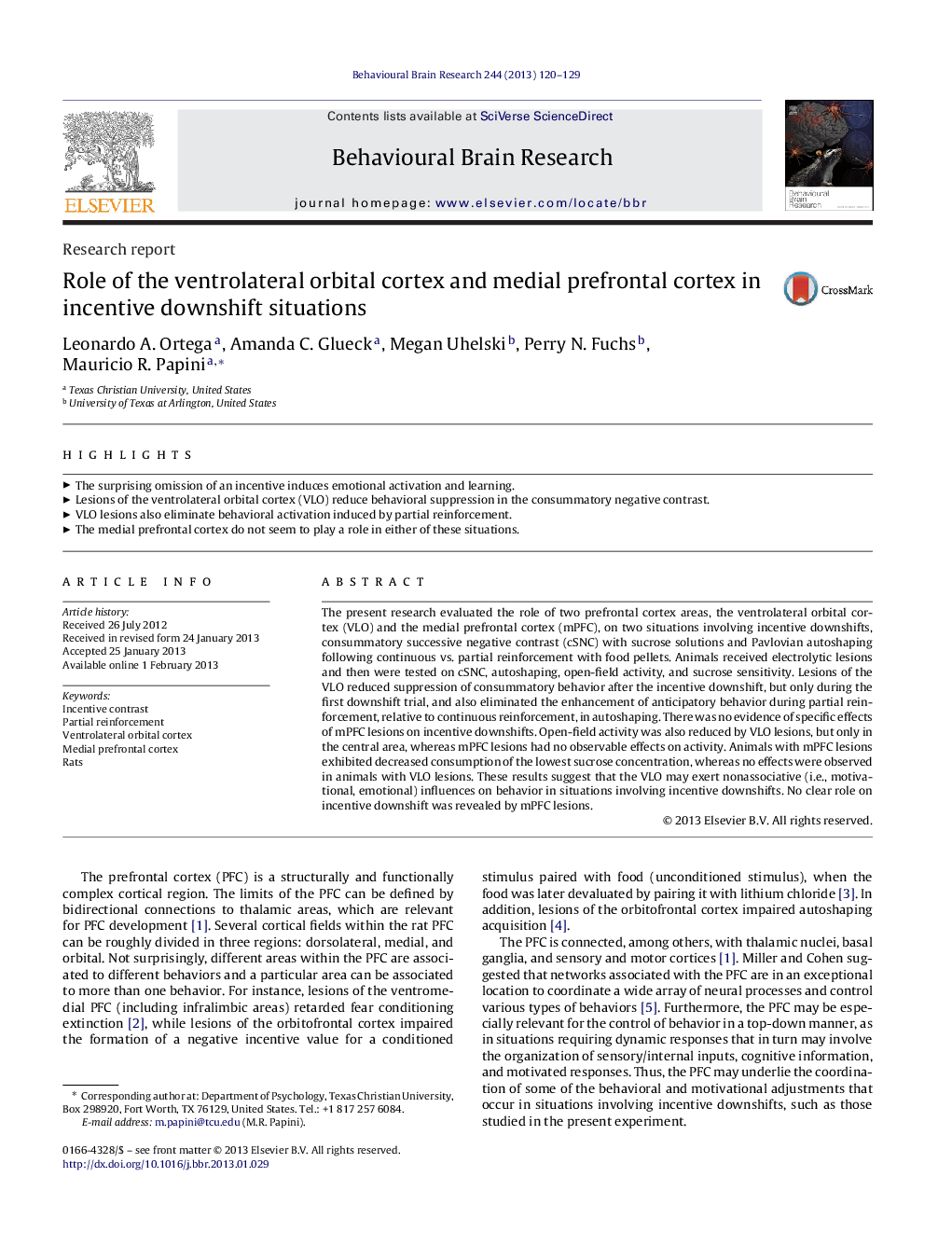| Article ID | Journal | Published Year | Pages | File Type |
|---|---|---|---|---|
| 4312736 | Behavioural Brain Research | 2013 | 10 Pages |
The present research evaluated the role of two prefrontal cortex areas, the ventrolateral orbital cortex (VLO) and the medial prefrontal cortex (mPFC), on two situations involving incentive downshifts, consummatory successive negative contrast (cSNC) with sucrose solutions and Pavlovian autoshaping following continuous vs. partial reinforcement with food pellets. Animals received electrolytic lesions and then were tested on cSNC, autoshaping, open-field activity, and sucrose sensitivity. Lesions of the VLO reduced suppression of consummatory behavior after the incentive downshift, but only during the first downshift trial, and also eliminated the enhancement of anticipatory behavior during partial reinforcement, relative to continuous reinforcement, in autoshaping. There was no evidence of specific effects of mPFC lesions on incentive downshifts. Open-field activity was also reduced by VLO lesions, but only in the central area, whereas mPFC lesions had no observable effects on activity. Animals with mPFC lesions exhibited decreased consumption of the lowest sucrose concentration, whereas no effects were observed in animals with VLO lesions. These results suggest that the VLO may exert nonassociative (i.e., motivational, emotional) influences on behavior in situations involving incentive downshifts. No clear role on incentive downshift was revealed by mPFC lesions.
► The surprising omission of an incentive induces emotional activation and learning. ► Lesions of the ventrolateral orbital cortex (VLO) reduce behavioral suppression in the consummatory negative contrast. ► VLO lesions also eliminate behavioral activation induced by partial reinforcement. ► The medial prefrontal cortex do not seem to play a role in either of these situations.
